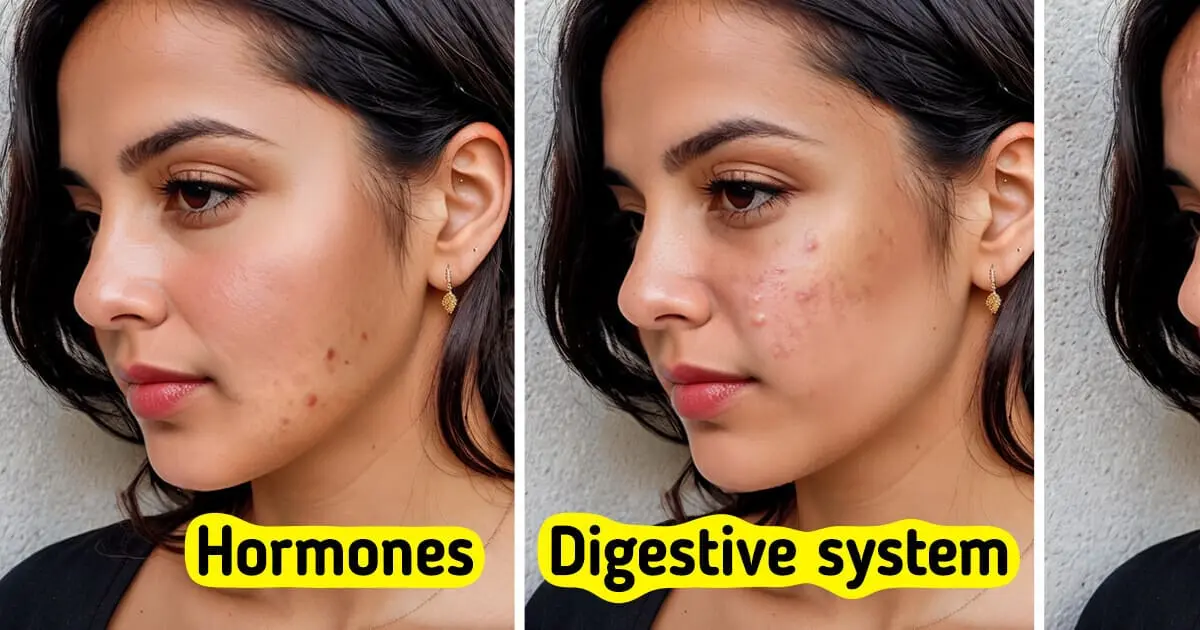Your face can reflect what’s happening inside your body. Small imperfections, blemishes, or changes in your skin may not just be cosmetic concerns—they could be signs of underlying health issues. Notice puffy eyes, unusually pale skin, or new wrinkles appearing suddenly?
These could be signals from your body that something isn’t quite right. It’s important to recognize these signs early and understand their meaning to prevent more serious health problems. Take a moment to check yourself in the mirror and stay aware of any changes!
Disclaimer: This content is for informational purposes only and is not intended to replace medical advice. Always consult your doctor for guidance on your health and medical concerns.
1. Puffy eyes
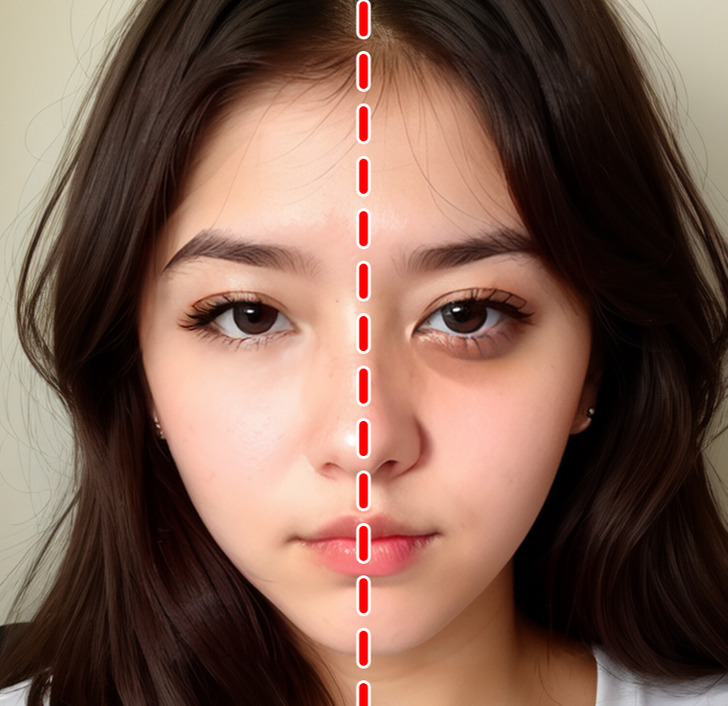
We’ve all experienced puffy eyes after a restless night or a day of crying. However, if the puffiness and bags persist despite rest or basic care, it could be a sign of kidney issues or fluid retention. The kidneys filter toxins from the body, and when they aren’t functioning properly, excess fluid may accumulate in the face, particularly around the eyes.
How can you tell if it’s a more serious concern?
- Does the puffiness remain throughout the day?
- Are you also feeling fatigued, experiencing changes in urination, or suffering from lower back pain?
- Do you have high blood pressure or circulation problems?
If you answered yes to any of these, it’s important to see a doctor to rule out potential kidney or heart issues.
2. Extremely pale skin

If you suddenly notice your skin looking much paler than usual, it could be a sign of anemia. Iron deficiency anemia decreases the number of red blood cells in the body, which affects how well oxygen is delivered to the skin, giving it a dull, lifeless appearance. Anemia can also be caused by circulatory issues or a deficiency in vitamin B12.
How can you tell if you’re anemic?
- Do your lips and skin appear pale?
- Are you experiencing constant fatigue, dizziness, or shortness of breath?
- Do you have brittle nails or hair loss?
If you notice any of these symptoms, it’s important to get a blood test to check for iron and other essential nutrient deficiencies.
3. Yellowish skin and eyes
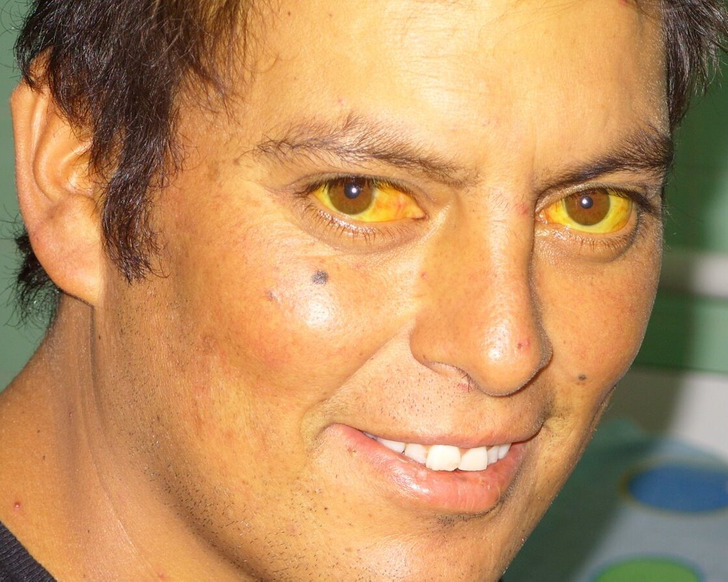
© Sheila J. Toro / Wikimedia Commons, © CC BY 4.0
A yellowish tint to your skin or the whites of your eyes could indicate liver problems, such as jaundice. This occurs when there’s an increase in bilirubin in the blood, which can be caused by conditions like hepatitis, gallbladder issues, or liver damage.
Quick check:
- Do your eyes have a yellowish tint?
- Do you feel discomfort on the right side of your abdomen?
- Have you noticed a change in the color of your urine or stool?
- Are you experiencing frequent nausea or loss of appetite?
If you answered yes to any of these, it’s important to see your doctor immediately.
4. Sudden appearance of expression lines

Wrinkles are a natural part of aging, but if they appear suddenly and deeply, it could be a sign of severe dehydration or elevated cortisol levels due to chronic stress. Cortisol breaks down the skin’s collagen and elastin, speeding up the aging process.
What can you do?
- Drink plenty of water to keep your skin hydrated.
- Manage stress through relaxation techniques like meditation or yoga.
- Eat a diet rich in antioxidants and healthy fatty acids to nourish your skin from the inside out.
5. Dry mouth and chapped lips

Extremely dry and chapped lips can indicate dehydration or a deficiency in B vitamins, particularly B2 (riboflavin). They may also be a symptom of allergies, hormonal changes, or even diabetes.
Quick check:
- Are you drinking enough water throughout the day?
- Do your lips have sores or cracks at the corners?
- Are you experiencing constant itching or burning?
If the dryness persists despite proper hydration, it’s important to see a healthcare professional.
6. Extremely oily or dry skin
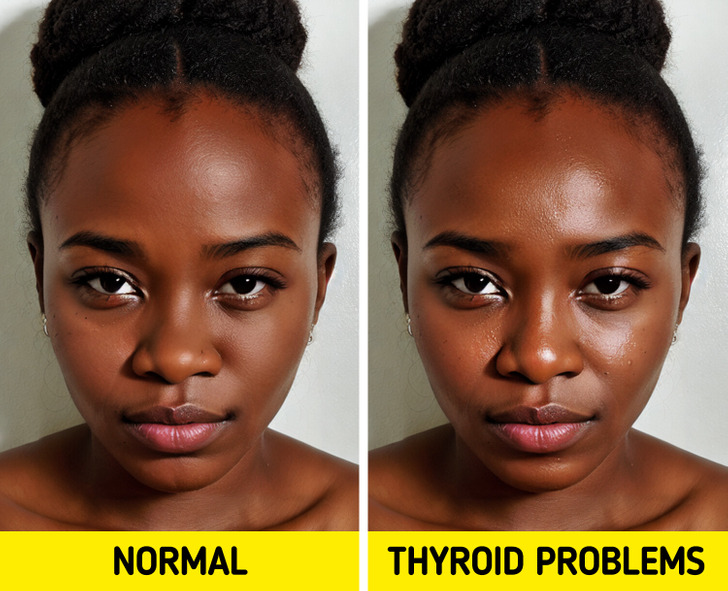
If you notice a sudden change in your skin’s texture, it could be related to hormonal imbalances. Excessively oily skin may indicate increased androgens, while overly dry skin could be linked to thyroid issues.
What can you do?
If symptoms persist, it’s important to consult an endocrinologist.
Check if the skin change is accompanied by hair loss, weight changes, or extreme fatigue.
Review your diet and hydration to rule out external factors.
7. Persistent skin rashes or acne in certain areas
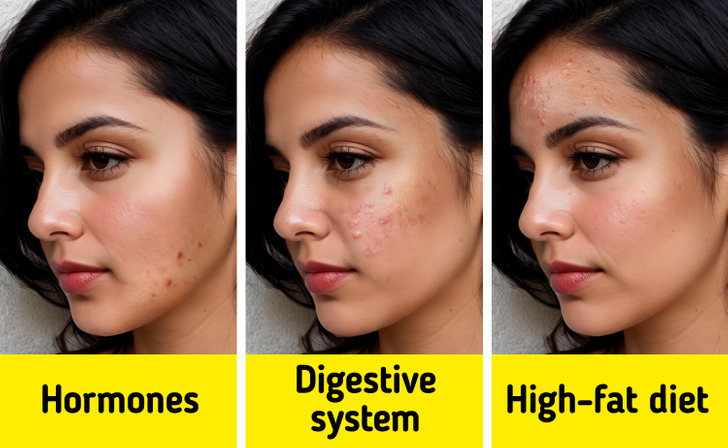
While acne is common, certain breakouts can be linked to internal issues. For example:
- Acne on the jaw: Often associated with hormonal imbalances in women.
- Acne on the cheeks: Typically linked to digestive problems.
- Acne on the T-zone: Often caused by oily skin, which can result from a diet high in fat and processed foods.
8. Excessive facial hair
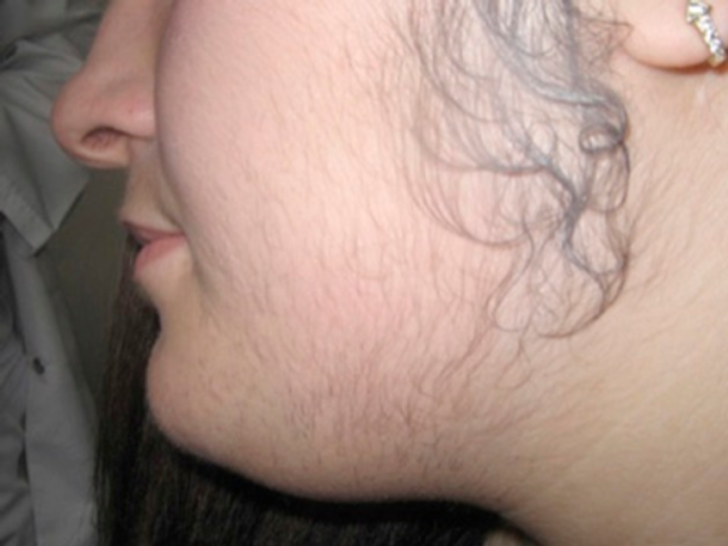
© Gacaferri Lumezi B, Goci A, Lokaj V, Latifi H, Karahoda N, Minci G, Telaku D, Gercari A, Kocinaj A / Wikimedia Commons, © CC BY 3.0
Excessive facial hair, particularly in women, may indicate polycystic ovary syndrome (PCOS), a hormonal disorder that affects ovulation and can be linked to insulin resistance.
Quick check:
- Do you notice hair growth in areas like your chin, cheeks, or neck?
- Are your menstrual cycles irregular, or do you have acne?
- Have you experienced unexplained weight gain?
If you answered yes, it’s important to consult an endocrinologist.
9. Appearance of new moles or changes in existing moles

If you notice a new mole appearing or any changes in the shape, color, or size of an existing mole, it could be a sign of melanoma, a type of skin cancer.
For a quick check, follow the ABCDE rule:
- Asymmetry: Is the mole irregularly shaped?
- Borders: Are the edges irregular or fuzzy?
- Color: Does it have multiple shades, or has it changed color?
- Diameter: Is it larger than 6 mm?
- Evolution: Has it grown or changed recently?
If you notice any of these signs, it’s important to see a dermatologist immediately.
10. Melasma (Dark Patches on the Skin)
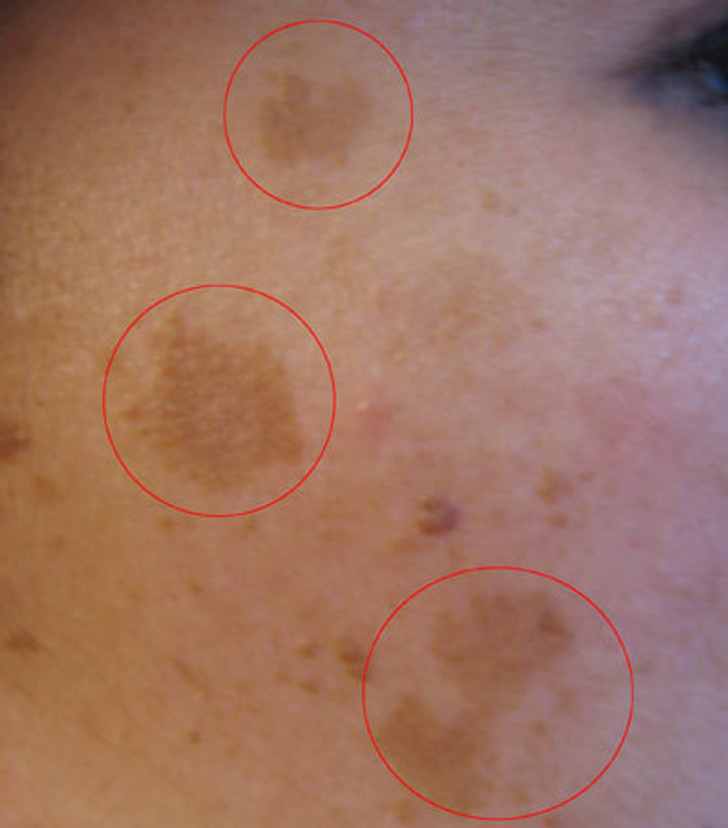
© Elord from Wikidocs / Wikimedia Commons, © CC BY-SA 3.0
Melasma is a form of hyperpigmentation that typically appears on the face, especially in women, due to hormonal changes, sun exposure, or the use of contraceptives.
How can it be prevented?
- Use sunscreen daily to protect your skin.
- Avoid prolonged sun exposure without protection.
- Consult a dermatologist if the spots increase in size or change color.
11. Butterfly Rash
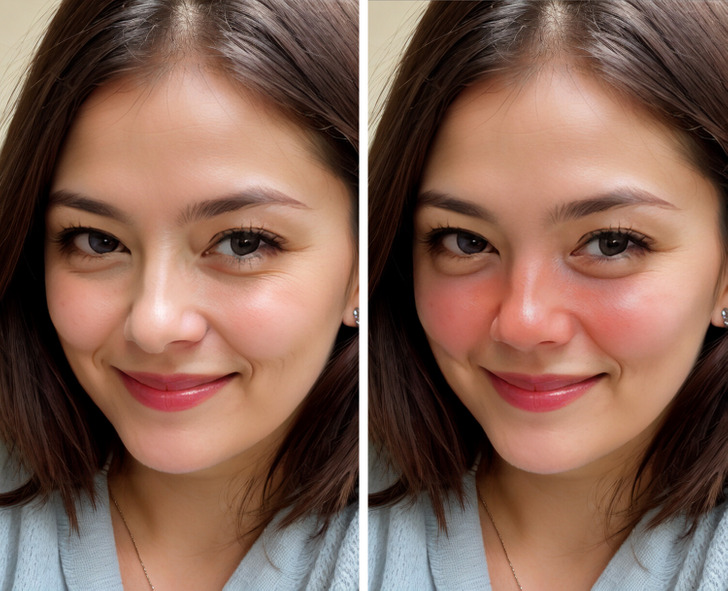
If you notice a reddish, butterfly-shaped rash on your cheeks and the bridge of your nose, it could be a sign of lupus, an autoimmune disease.
Quick check:
- Does the rash appear after sun exposure?
- Is it accompanied by fatigue, fever, or joint pain?
- Do you experience extreme sensitivity to the sun?
If you answered yes, it’s important to see a doctor to rule out autoimmune diseases.
Bonus: Darkening of the Skin Around the Neck or Armpits
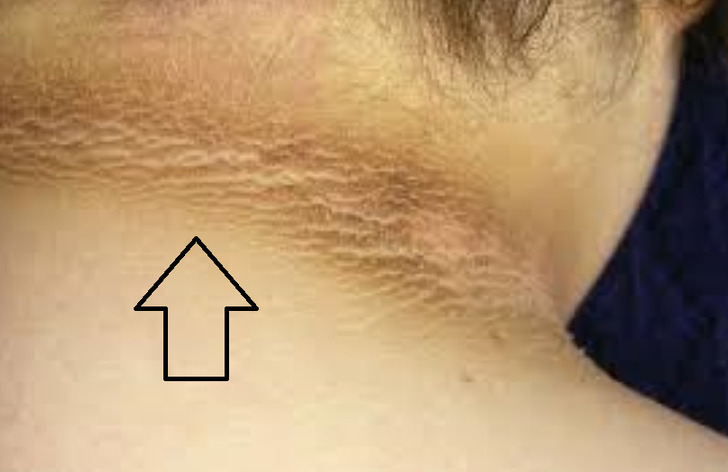
© André Cordeiro da Silva / Wikimedia Commons, © CC BY-SA 4.0
The darkening of the skin, known as acanthosis nigricans, may be a sign of insulin resistance, a metabolic condition that can lead to type 2 diabetes.
Quick check:
- Does your skin feel thicker in these areas?
- Do you have a family history of diabetes?
- Have you experienced sudden weight gain?
If you answered yes, it’s important to get your blood glucose checked.
Your face reveals more than you might think. Every skin change, blemish, or puffiness could be a clue about your overall health. Don’t ignore these signs—catching a problem early can make all the difference.
If you’re interested in learning more about how your body can give you clues to your health, don’t miss this article, where we explore other unexpected symptoms to look out for.
